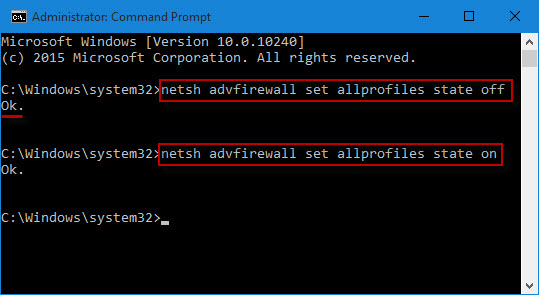
#TURN OFF WINDOWS FIREWALL POWERSHELL WINDOWS 10#
Windows 10 and Windows 11 systems have this feature turned off by default. Don't Make Me Come Over Thereīy default, Windows Server 2012R2 and later have PowerShell remote access turned on by default. We'll follow up with more scalable PowerShell remote access in a second article. In this article we'll look at Enable-PSRemoting and Enter-PSSession. Microsoft makes remote access to Windows systems with PowerShell broadly accessible with just a few commands: TL/DR: PowerShell supports consistent remote access over accessible protocols, giving us tremendous access to manage and interrogate remote systems. Microsoft has instead indicated that remote access in PowerShell will be built with the WS-Management protocol using HTTPS and the Simple Object Access Protocol ( SOAP) protocol using XML data structures.

In modern environments where only restricted access to SMB is permitted, you may find that remote access with these commands may not work. The Microsoft documentation for remote access using -ComputerName indicates that this remote access capability in select PowerShell cmdlets uses " varying communication protocols". Handles NPM(K) PM(K) WS(K) CPU(s) Id SI ProcessName NET capability exposed in PowerShell for easy access: PS C:\Users\Sec504> Get-Process -ComputerName SEC504STUDENT Since the early versions of PowerShell, Microsoft has added support for cmdlets to run on remote systems with the -ComputerName parameter: PS C:\Users\Sec504> Get-Command -ParameterName ComputerName | Where-Object -Property CommandType -Eq Cmdlet | Select-Object -Property Name Perhaps the most immediately-valuable feature for Windows administrators is the ability to run PowerShell commands on remote systems.

NET and Component Object Model (COM) APIs.

#TURN OFF WINDOWS FIREWALL POWERSHELL FULL#
PowerShell is useful on more than just Windows systems, but it is most powerful on Windows, with full Common Information Model ( CIM) support, Windows Management Instrumentation ( WMI) access, and full. Immediately apply the skills and techniques learned in SANS courses, ranges, and summits


 0 kommentar(er)
0 kommentar(er)
